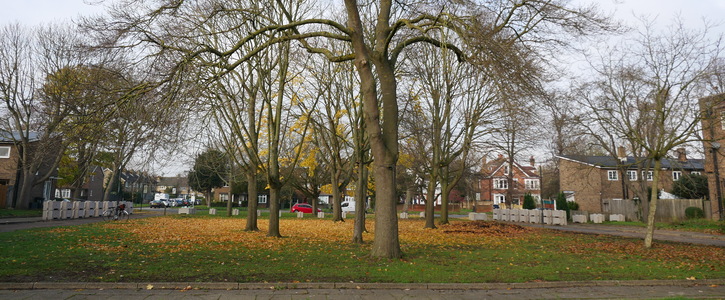100 signatures reached
To: Lambeth Borough Council, MTVH, and Countryside
Save the trees in Morten Close

Dear Councillors and Developers,
- We are asking you to hold an urgent review and halt the destruction of trees and drastic reduction of green space at Morten Close.
- We are demanding that plans for the area be rethought in view of the increasing urgency of the climate crisis.
- We are asking for a full, new consultation about the plans with residents and environmental groups.
- We are asking you to hold an urgent review and halt the destruction of trees and drastic reduction of green space at Morten Close.
- We are demanding that plans for the area be rethought in view of the increasing urgency of the climate crisis.
- We are asking for a full, new consultation about the plans with residents and environmental groups.
Why is this important?
There are 18 trees on the green at Morten Close, and they comprise ecologically valuable specimens, including a large group of Norway Maples, a mature Oak and mature Ash tree. 11 of these are to be removed under present plans, including all the Norway Maples. The amount of green space will be reduced by more than 70%, with the two broad roads constricted to a single narrow entry.
In a climate emergency, we can no longer afford this way of developing.
Removing the trees will have several negative consequences:
- They are a biodiverse habitat supporting insects and birds.
- They are a major carbon store and once cut down, this carbon is lost to the environment.
- They have been on this site for many years, and in some cases decades.
- Replacing them with new trees, even semi-mature ones, is a costly and wasteful option. It will be many years until they “make up” the carbon and biodiversity toll.
- They form part of a natural landscape close to the hearts of Clapham Park residents.
It is five years since the planning application was first written for Clapham Park. Since then, climate change has worsened. It is now acknowledged that we are undergoing an existential threat.
Lambeth Council recognised this by declaring an ecological emergency in January 2019. Lambeth’s Climate Action Plan makes the priority of green space abundantly clear:
Green infrastructure, just like traditional forms of infrastructure, provides essential support to every living being on the planet. Trees, shrubs and plants absorb carbon dioxide and pollutant gases, purifying the air we breathe. Green spaces slow the rate of water runoff, reducing pressure on drainage systems and regulating flooding. Urban greenery provide habitats for birds, insects and other species and cools surrounding areas, providing relief from hotter temperatures.
The present plans mean losing a large proportion (>70%) of the green space and over 60% of the tree coverage.
We can no longer afford to be going backwards on our commitment to green infrastructure.
In a climate emergency, we can no longer afford this way of developing.
Removing the trees will have several negative consequences:
- They are a biodiverse habitat supporting insects and birds.
- They are a major carbon store and once cut down, this carbon is lost to the environment.
- They have been on this site for many years, and in some cases decades.
- Replacing them with new trees, even semi-mature ones, is a costly and wasteful option. It will be many years until they “make up” the carbon and biodiversity toll.
- They form part of a natural landscape close to the hearts of Clapham Park residents.
It is five years since the planning application was first written for Clapham Park. Since then, climate change has worsened. It is now acknowledged that we are undergoing an existential threat.
Lambeth Council recognised this by declaring an ecological emergency in January 2019. Lambeth’s Climate Action Plan makes the priority of green space abundantly clear:
Green infrastructure, just like traditional forms of infrastructure, provides essential support to every living being on the planet. Trees, shrubs and plants absorb carbon dioxide and pollutant gases, purifying the air we breathe. Green spaces slow the rate of water runoff, reducing pressure on drainage systems and regulating flooding. Urban greenery provide habitats for birds, insects and other species and cools surrounding areas, providing relief from hotter temperatures.
The present plans mean losing a large proportion (>70%) of the green space and over 60% of the tree coverage.
We can no longer afford to be going backwards on our commitment to green infrastructure.

